Virginia Has Its Own Stonehenge, But It’s Made Out of Foam
It even works like its predecessor.

Even to the savviest smartphone photographer, capturing the perfect selfie at Foamhenge in Centreville, Virginia, is nearly impossible. But who wouldn’t want to try?
The life-size Stonehenge replica with its 14-foot-tall foam-stone pillars is just one of the artistic offerings at Cox Farms. There’s also a prodigious praying mantis, statues of ants the size of alligators, and something called “The Cornundrum.”
I meet Lucas Cox on a drizzly day at the family-owned farm in Fairfax County.
“It feels like it’s England,” Cox offers, “The rain, you know.”
Cox identifies himself as co-farmer-in-chief. His sister, Aaron, makes up the other half of the farm management team. Cox Farms is set up for its fall festival, which runs through early November. Kids dart about, parents corral them around pumpkins, and cows munch on hay. Cox and I slosh through the mud until we reach the huge, gray monolithic stones that make up Foamhenge. It’s easy to forget that this isn’t real rock, but Styrofoam. Foamhenge is the creation of Mark Cline, a Virginia artist who enjoys a loyal local following, including Cox.
“The sunflower over there, that’s a Mark Cline piece. Way over there, in ‘The Cornadrum,’ there’s a praying mantis coming over a building, that’s a Mark Cline piece,” says Cox, gesturing all around the property, “There are some ants in there. That dinosaur is a Mark Cline piece.”
Beyond Cox Farms, Cline is also well-known due to his work at Dinosaur Kingdom II and Maryland’s Enchanted Forest. Cline says that Foamhenge has captured the public’s attention like none of his other pieces.
“Foamhenge became quite ‘foam-nomenal,’” Cline says, then quickly follows with, “Pardon the pun.”
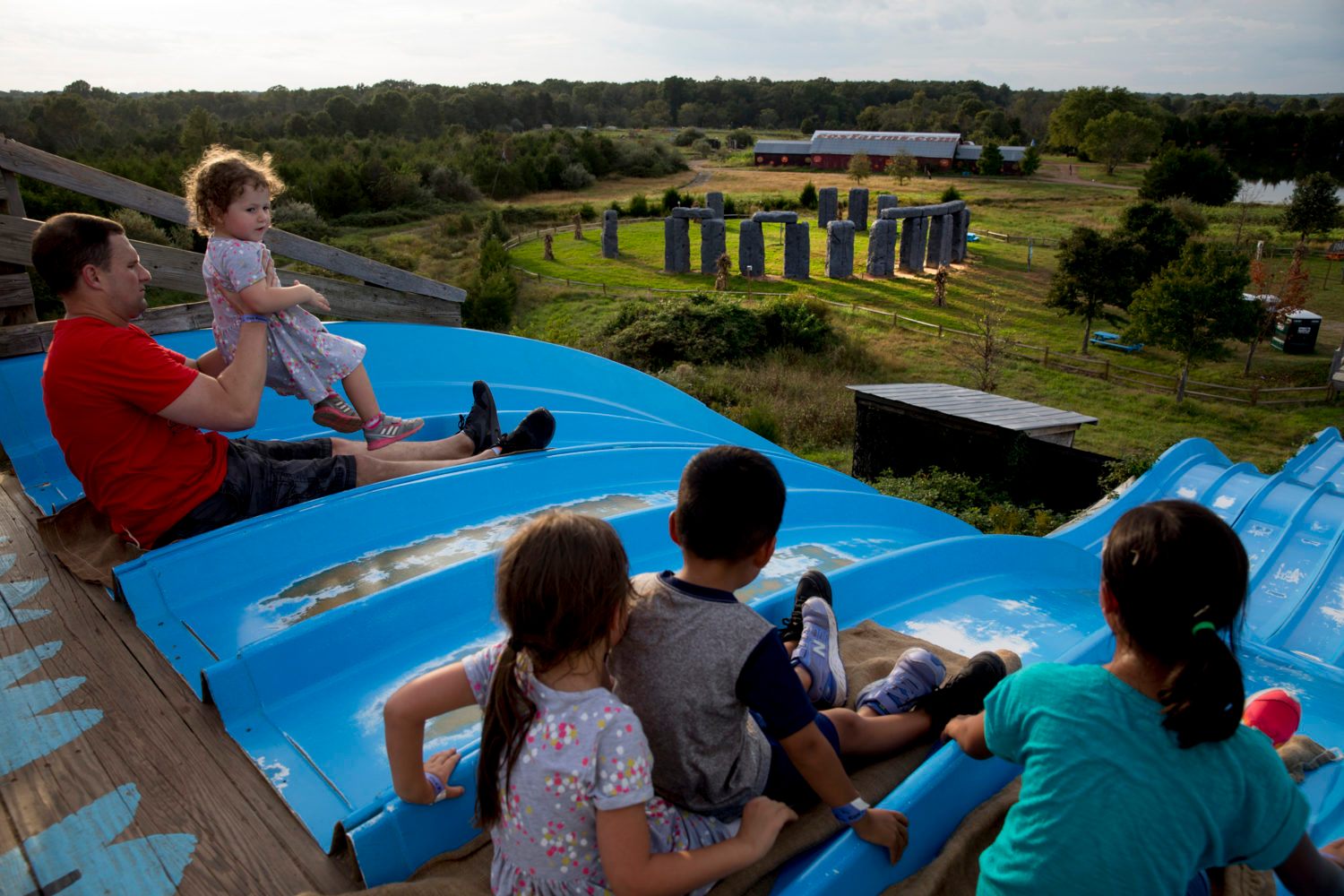
The Styrofoam Star’s Humble Beginnings
Originally built as an April Fools’ joke in 2004 in Natural Bridge, Virginia, Foamhenge became an obligatory roadside stop for thousands of travelers. It was featured in a Geico commercial, seen in the television crime drama NCIS, and even used as a question in Jeopardy.
Cline has never been to Stonehenge himself, so he went online to study each rock of the ancient site to ensure it was as accurate as possible. It took him six weeks and about $10,000 to construct.
“It took the Neolithic people, I think, 1,500 years to build it,” he says. “So, they should have used foam.”
In 2017, Cline and Cox made a deal to bring Foamhenge to the family farm on one condition.
“If you want to build a replica of Stonehenge, it’s gotta work,” Cline says.
Many modern-day researchers believe that Stonehenge was built to tell time, essentially as a rudimentary solar calendar. It’s thought it was constructed in stages, starting around 3000 BCE and was finished in 1500 BCE. It was a time when humans were just learning how to farm, and it’s thought that Stonehenge helped them predict seasons, solstices, and even eclipses. So, when Cox brought Foamhenge to the family-owned farm, he called a professional to help. He wanted to ensure the replica was set up exactly the way our ancient ancestors intended it.
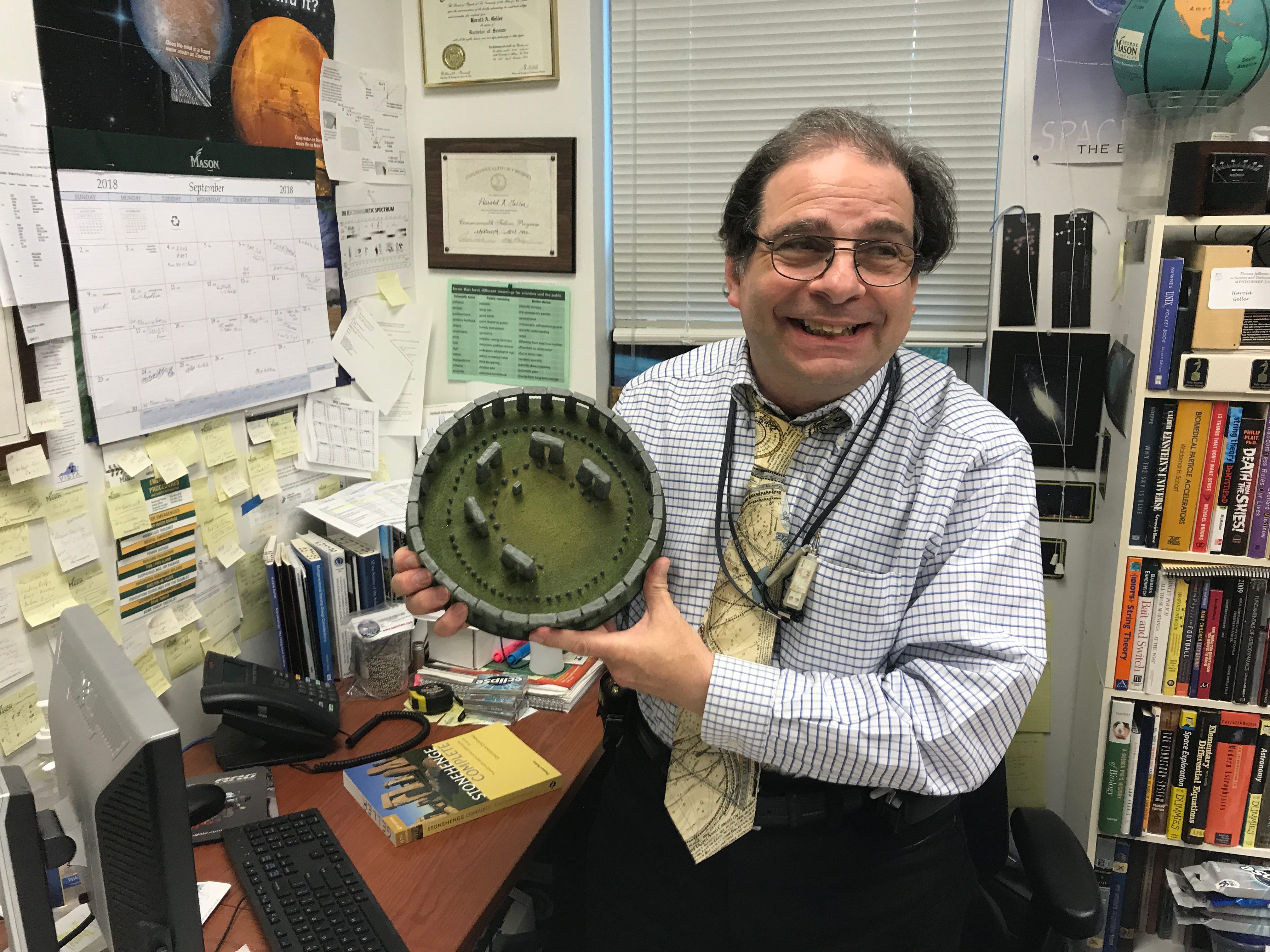
Harold Geller is the Observatory Director at nearby George Mason University, and he was just the type of person Lucas Cox was looking for. Foamhenge might seem like an odd job, but Geller has consulted on couple of other unique projects in the region. But Stonehenge has held a special place in his heart ever since he visited the original when he was a graduate student.
“We forget that our ancestors really were watchful of the night sky,” says Geller, “If these ancient civilizations, who ever they were, used foam instead of stone, it would have still worked the same!”
Like Clockwork
For Foamhenge to work like its predecessor, Geller needed to see the site on the summer solstice. So, just before sunrise on June 21, 2017, Geller met Cox at the farm.
“He brought his sextant out and we watched the sun come up. It was great,” Cox says, excitedly remembering that early morning meeting. “We wouldn’t be doing it justice if we just dropped it in the ground somewhere. We had to get it astronomically correct.”
The two men waited for the sun to peek over the horizon and quickly marked the place where each foam piece would stand. Then, a short time later, three flatbed trucks packed with styrofoam barreled down the highway from Natural Bridge to Cox Farms.
Each foam piece weighs approximately 400 pounds. That’s nothing compared to 25 tons, the average weight per stone of the original. But foam still poses unique challenges.
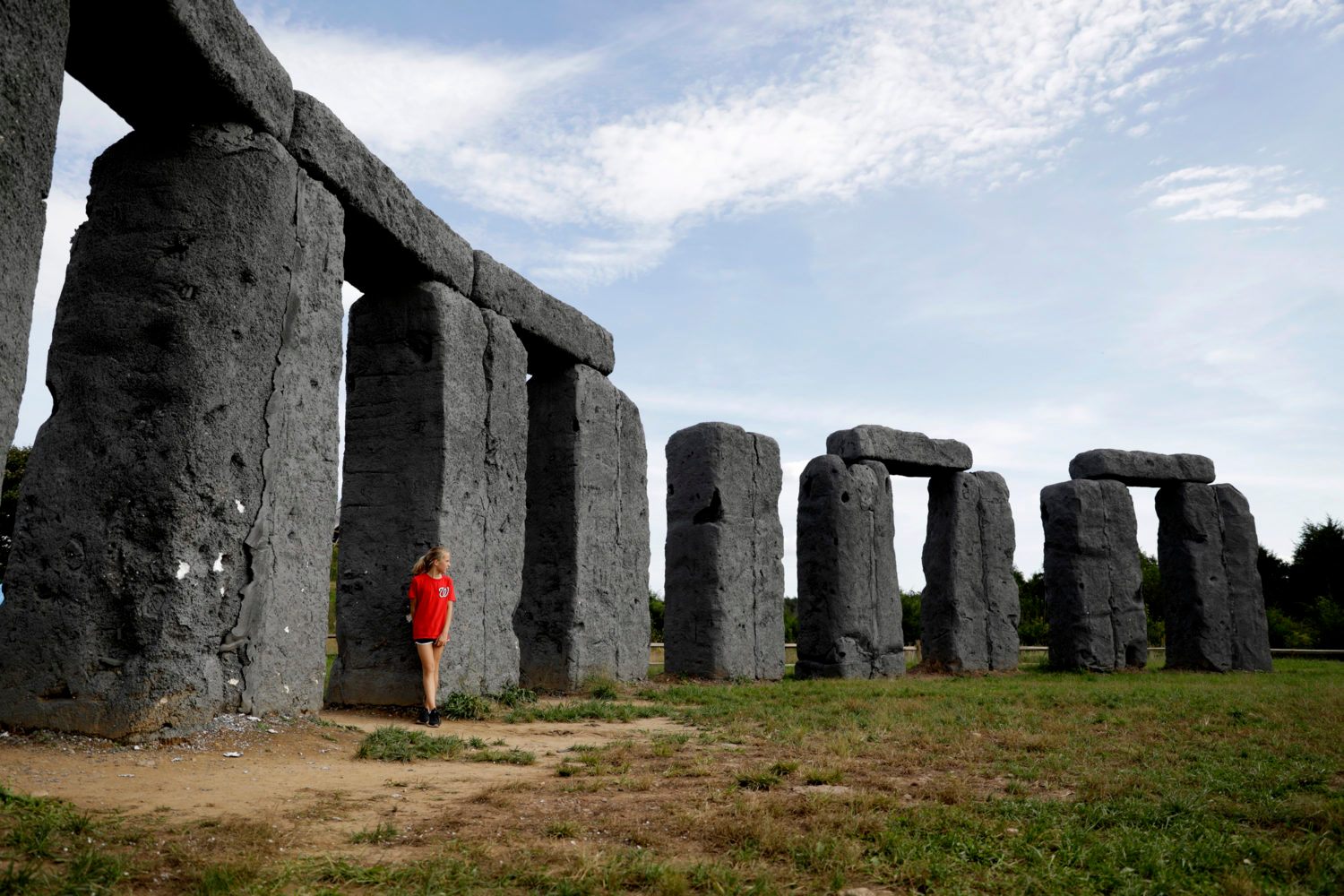
Protecting A “Foam-nomenal” Legacy
“Foam is difficult to work with because a lot of different things eat foam,” says Alicia Smith, Cox Farms’s art director and the one entrusted to keep Foamhenge “foam-nomenal.” “You can’t use spray paint on it because there’s acetone in spray paint. Acetone eats foam.”
Smith has her work cut out for her. Kids like to poke everything… including Foamhenge. Curious critters like skunks and foxes have burrowed the foam for shelter. And unpredictable weather, like last year’s hail storm, doesn’t help.
“It looked like someone went through and just threw golf balls at it,” says Smith, “It looked polka-dotted almost because we had so much hail.”
Every year, Alicia touches up the artwork with 35 gallons of paint—Behr’s “Dark Granite” to be exact. It’s a surprising amount of maintenance for styrofoam, which can take centuries to decompose in a landfill.
So, that leaves us with one question: Which one will last longer, Stonehenge or Foamhenge?
“That’s a tricky question,” Smith says, laughing, “I’m going to guess Foamhenge.”
And Cox agrees, “Foamhenge… as long as we have Alicia taking care of it!”
If only Stonehenge had an art director.
This story is part of Hidden City, a collaborative partnership of WAMU and Atlas Obscura. You can listen to the accompanying audio story on WAMU’s site.
Rebecca Feldhaus Adams contributed to this piece. Poncie Rutsch produced the audio story.




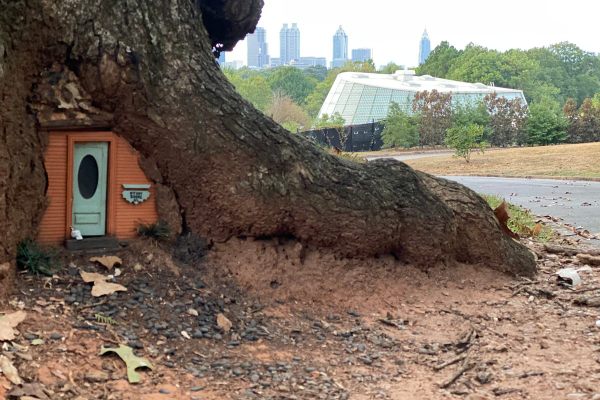


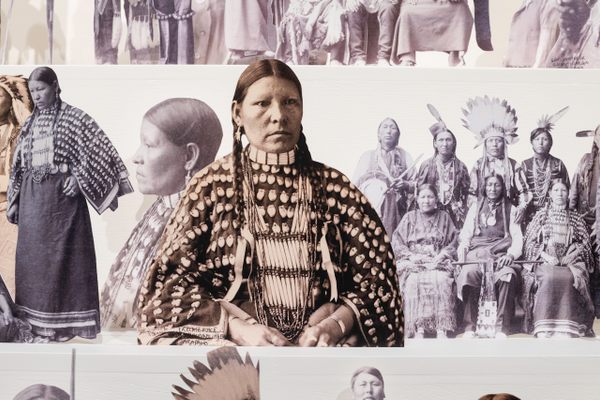


















Follow us on Twitter to get the latest on the world's hidden wonders.
Like us on Facebook to get the latest on the world's hidden wonders.
Follow us on Twitter Like us on Facebook